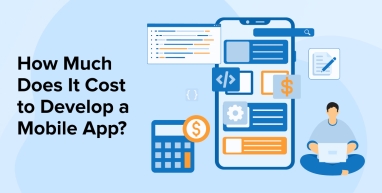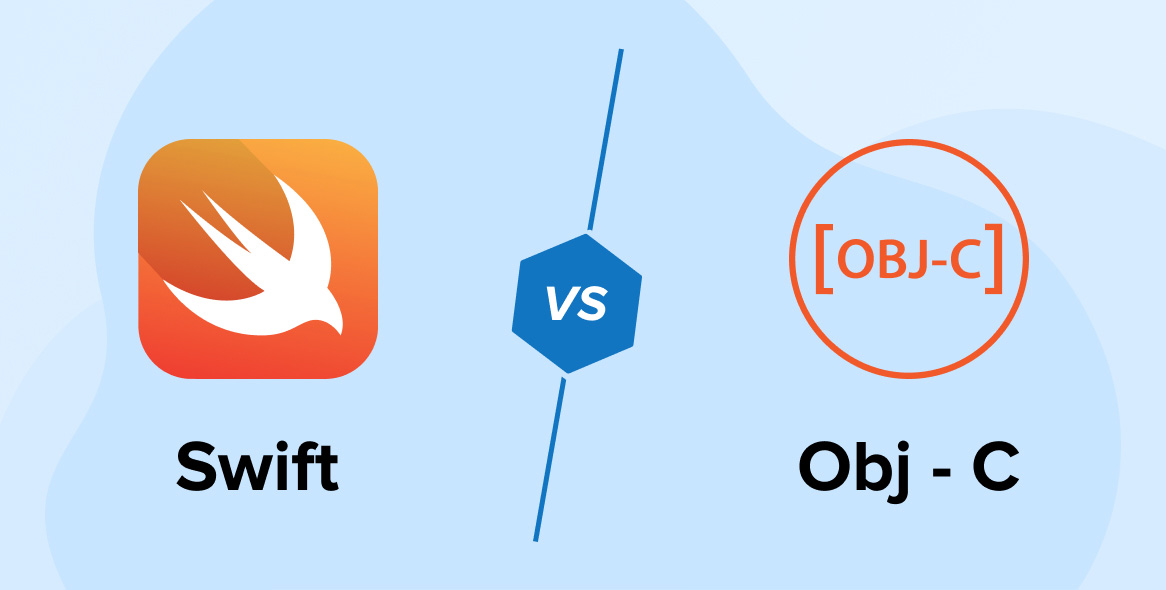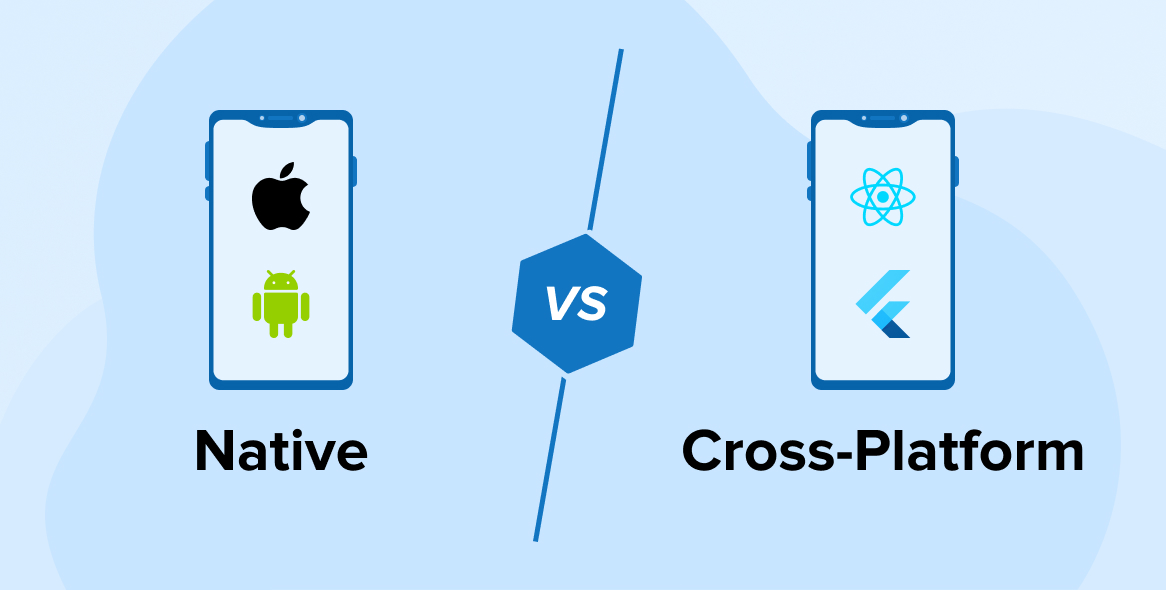
The cost of mobile app development primarily depends on engineers’ hourly rates and the amount of development work required. The pricing and scope might differ greatly based on the location and competence of the developers. Getting an accurate initial estimate might be challenging because development time can range from a few weeks to several months.
In this post, we will roughly examine various costs associated with developing a mobile application based on many factors.
1. The Simplest Way to Calculate Mobile App Development Cost
There are hundreds of variables that go into determining a mobile app development price, but first, let’s narrow down apps based on their complexities. The cost of developing an app depends on various factors, including complexity, design, features, and platform. Let’s begin by examining various levels of app complexity.
1.1 Simple App
The most basic or simple apps contain five to six screens, minimal functionalities, and do not require a backend or network connectivity. In today’s market, these apps are relatively uncommon. Their features generally include a user interface, user registration, and login, and basic functionality. These apps are usually developed within 5 to 11 weeks.
- Estimated App Cost: $10K to $30K.
- Development Timeline: 2-3 months.
- Examples: Calculator, Clock, Catalog browsing app.
1.2 Medium Complexity App
More advanced features, such as interactions with other parties, push notifications, real-time updates, and intuitive user interfaces, are features of medium-complexity apps. Due to the number of additional features, the price estimate for creating such an app is higher. Each user has their own account and can access their synced data across multiple connected devices. To support this functionality, there must be an administrative panel to handle content and users effectively.
- Estimated App Cost: $61K to $150K.
- Development Timeline: 3-6 months.
- Examples: eCommerce application, Loyalty App.
1.3 Complex App
Compared to simple applications, complex apps incorporate advanced technologies such as machine learning, virtual reality, and artificial intelligence. These apps often have sophisticated architectures and require robust back-end systems to manage large volumes of data and user interactions efficiently. Examples of complex apps include:
- Estimated App Cost: from $300K.
- Development Timeline: more than 9 months.
- Examples: Instagram, Uber, Google Pay.
2. Factors Influencing Mobile App Development Cost
The costs associated with developing mobile apps can vary widely depending on several key factors. You can maximize your returns and make the most informed and efficient choices by keeping these cost-affecting factors in mind. On top of that, it will assist you in sticking to your financial plan.
The total cost of developing a mobile app depends on several aspects; thus, let’s examine them in detail.
2.1 Functionality and Features
Several factors influence the total cost of app development, with the app’s features and functionality being among the most significant. The more complex or numerous the features, the higher the initial development cost.
Therefore, with the first release of the app, it’s best to focus on the essential functionality exclusively. It will assist you in providing an excellent client experience while keeping expenses down. Building a minimum viable product (MVP) is the way to proceed. A product’s initial release is the most stripped-down version ever. Spend less time and money developing an MVP while still collecting useful input from users.
Let’s discuss a few features now!
UI Optimization
You need to make sure your software can adjust to bigger screens if you want people to use it on their tablets. A higher budget for app development is required for such optimization. Tablets are frequently prioritized early in app launches due to their larger screen sizes designed for entertainment, productivity. However, usability suffers greatly without a user interface that accommodates big displays. A budget increase of up to 1.5 times the original app’s development cost may be necessary to include tablet compatibility for a better UI.
Mobile OS Versions
If a mobile app has to be compatible with an older device or an outdated operating system version (iOS or Android), the app development expense can increase significantly, often up to double the rate. Although these outdated gadgets have a negligible market share, supporting them is unnecessary unless your target users specifically use such devices.
Offline Mode
Your program needs caching algorithms if it wants to function even when there’s no network connection. There is a cost associated with this capability, but it offers an exceptional user experience. If you want to sync the app data across many devices, things become much trickier. The price range for an app’s architecture with features like cross-device syncing and local cache is $8K to $12K.
User Profile & Social Login
In a user profile, people can specify who they are, what they like, and other personal information. Most social networking applications on mobile include this feature. Adding a user profile to an app costs you around $2,400, depending on complexity. A user can utilize their Twitter, Facebook, or other social network account to log in using social login. Integrating a social login option typically costs about $700 for each network. Within $2K, you should be able to have a fully functional login, authorization, and registration system that is custom-built, although it depends on the level of security, scalability, and user experience requirement.
Integrating Payments
Incorporating these and many more features into a mobile app might be quite a challenge. Here are a few of them:
- Google Maps and Apple Maps are two examples of location-based services.
- Internet payment systems, such as GPay and PayPal.
- Animated graphics presenting your company might be costly.
- Recognition of images using optical technology, machine learning, and computer vision.
An initial investment of around $2,600 per feature is required to implement such a competency.
2.2 Platform & Technology
The development cost might change based on the operating system you choose. How do you define each application version? Now let’s understand that.
iOS App
Applications developed with the iOS platform in mind are those that run on the iPhone and other Apple devices and are optimized to function in sync with the hardware and software features of that device. Technologies like Xcode, Swift, Objective-C, and SwiftUI are used to develop these applications.
- The cost of iOS app development typically starts around $40K and can increase significantly depending on the app’s complexity and the required features.
Android App
As the name suggests, Android apps are designed to run exclusively on the Android operating system developed by Google. They ensure users have an optimal experience by interacting with the OS’s components. Kotlin and Java are the most commonly used languages to build these apps.
- The complexity of the app, applicable regulations, and other criteria determine the price tag for developing an Android mobile app, which can start around $40K and can increase depending on the complexities and features of the app.
Hybrid App
When developing a hybrid mobile app, developers use a single codebase that can run well on both iOS and Android devices. True hybrid apps typically use frameworks like Flutter and React Native, which leverage web technologies inside a WebView container.
- The cost to develop an app can starts from $60K to anywhere, depending on the complexities and features of the app.
2.3 Development Model – In-house or Outsourcing
The following models highlight the impact of various hiring strategies on app development budgets.
In-house Model
Perhaps the most costly choice is to employ a team of in-house developers to create the app. The sole benefit of developing in-house is being physically close to the team, which allows for easier and faster communication. However, managing a complete team running effectively is a difficult task, requiring constant attention and additional administrative costs.
The average income of software professionals is influenced by high costs of living and the availability of computer expertise in a given region. As an example, the cost of employing an in-house staff in the US is:
- $100K to $130K yearly for a full-stack engineer.
- $70K to $100K yearly for designers.
- $90K to $120K yearly for a native mobile app developer (iOS or Android).
Outsourcing
This model involves hiring a foreign app development company to help you develop your app while you maintain full control over the entire process. The best part is that you have the option to either completely outsource the task or add a specific number of IT specialists to your team. How much it will cost to outsource app development is directly related to the location of the developers you choose. For example, though programmers in the United States and the United Kingdom charge $100–$120 and $80–$100 per hour, respectively, software developers in India charge $20 – $40 per hour.
One way to minimize the expense of app development is to hire an outsourcing company to handle the task for you. However, you should perform your research before choosing an app development partner. Assess the service provider and consult with the team:
- Make sure the service provider is skilled.
- Take a look at their previous work and portfolio.
- It is important to confirm the input provided by clients.
- Think about the security measures taken by the service in question.
- Make a strategy on how you both can effectively communicate in the future.
2.4 Type of App
To explain how mobile app development costs can vary significantly among industries, we have compiled a list of several application types and domains along with their respective building cost ranges. Please note that these figures are derived from the averages of the IT sector as well as our developers’ prior work on applications with similar features.
Healthcare Industry
- The cost of a telemedicine app in the healthcare industry ranges from $250K to $350K or more. Examples of such platforms are Teladoc and Doxy.me.
- The price range for the fitness monitoring app is $120K to $150K. Two examples of this are Apple Health and Google Fit.
FinTech Industry
- FinTech refers to financial technology. The cost of finance apps often falls within the range of $240K to $400K or more. Some examples of such platforms are Mint and Personal Capital.
- The cost of an eBanking app often falls within the range of $200K to $400K or more. Some examples of such companies include Revolut and Chime.
Social Networking for Connecting and Interacting
- The cost of social networking apps often costs $240K+, depending on the complexity and feature requirements. Some examples of social networking platforms are Facebook and LinkedIn.
- The cost of developing a dating app can cost $200K+, depending on the features and complexities. Examples include Tinder and Bumble.
Travel & Hospitality
- Applications for booking travel plans, including flights and hotels, can cost $300K+ depending on the requirements of features and the level of complexity. Examples are Booking.com and Expedia.
2.5 App Development Team Structure & Location
The cost of the mobile app also significantly influenced the team structure. Any development team consists of different positions and roles to carry out the necessary phases of the development cycle. The following is a rough estimate of what you can expect to pay for a mobile app developer and an outsourced app development team.
| Cost Factors and Requirements | Simple App | Medium App | Complex App |
|---|---|---|---|
| Project Manager | $2K-5K | $3K-15K | $10K+ |
| Business Analyst | $1K-3K | $4K-8K | $8K-10K |
| Developers | $5K-22K | $25K-60K | $100K+ |
| UI/UX Designer | $1K-5K | $3K-7K | $10K-15K |
| Solution Architect | – | $3K-8K | $9K+ |
| QA Specialist | $1K-5K | $3K-20K | $20K+ |
| DevOps | – | $4K-7K | $10K+ |
| Development time | 2-6 months | 6-9 months | 9-15 months |
| Total | $10K-40K | $45K-100K | $100K+ |
Not only that, but employment-related taxes and regulations might vary greatly from one country or area to another. The total cost of development could go up if firms are required to pay high taxes, insurance, or perks when they hire developers in certain countries and locations.
The location might also affect the infrastructural expenses of operating a development team. Some areas may have greater overhead expenses, such as rent and utilities, than others. A region’s typical app development cost might be impacted by the availability of qualified experts in that area. It could be more challenging and costly to get the right staff in some fields if you want a particular set of skills or technologies.
The average cost of app development varies across different geographical areas, as discussed below:
- In India, the app development cost is $20-40/hr.
- In Ukraine, the app development cost is $30-100/hr.
- In the United States, app development costs are $80-170/hr.
- In Russia, the app development cost is $60-150/hr.
- In Australia, app development cost is $80-200/hr.
All things considered, these are the components that go into determining the price of app development. Now, let’s discuss the cost variation for different stages in the app development process.
3. App Development Stages With Cost
You have already done some preliminary analysis on the average cost to develop an app. No matter how precise the figure appears, we must warn you that it will likely just serve to give a rough idea. The development cost is dependent on the features, technology, design, location of the development team, etc., of the app; such figures usually reflect the average cost.
Therefore, to help you better understand how much budget you will need, we will dissect the app development cost structure according to the various stages of mobile app development.
Stage 1: Discovery
Analyzing and planning are some names for the Discovery stage. It’s the initial stage that many businesses take while creating an app. During this stage, a product owner, software architects, business analysts, and user experience/user interface designers often complete the following tasks:
- An extensive study on the market and analysis of competitors.
- Defining the problems that the software can fix for potential consumers.
- Making the graphical mockups for the app.
- Organizing and planning the whole process of developing an app, including creating a schedule.
It is said that analysis and project planning are the first steps for 70% of businesses.
- Timeline: 2 to 4 weeks.
- Projected expense: $2,400 to $11K.
Stage 2: Designing
Wireframing, software prototype, and user interface (UI) design make up most of the second phase. Creating an aesthetically pleasing app that captures users’ hearts is of the utmost importance since, as we all know, first impressions are lasting impressions.
You must spend money on design since it determines the success or failure of your project. Due to factors such as complicated screens, bespoke components, visual complexity, etc., the amount of time required to complete the project might be higher, adding another 10% to 15% to the total cost of developing the app.
- Timeline: 3 to 4 weeks.
- Projected expense: $4K to $10K.
Stage 3: Code Development
Out of all the steps in developing an app, the coding phase is the most expensive. Here, the anticipated cost of app development is determined by the complexity of the functions, making it the most crucial and costly stage of mobile app development.
You should pay attention to the application’s architecture, data encryption and storage, user base, third-party integration, etc., at this point, in addition to the functionality.
The cost of coding and programming is far more than all previous phases combined; hence, this step requires close collaboration and meticulous attention from your engineers. Also, instead of making separate apps for each device, you can save a ton of time and effort by using a mobile app development framework that is compatible with numerous platforms.
- Timeline: 2-6 months.
- Projected expense: $20K to $60K+.
Stage 4: App Testing & Deployment
From testing and deployment, the expense of creating an app is a part of it. When making an app, testing and quality control are crucial. During this stage, you can assess if your software is bug-free, ready for consumers, and offers a great user experience.
- Timeline: 2-4 weeks.
- Projected expense: $5K to $10K.
Asking “How much does it cost to build an app?” is not a simple task due to the many aspects that play a significant role. In most cases, it is dependent on the intricacy of the features, the outsourcing nation, and the business you are collaborating with. For instance, the range of costs for app development from a small to medium app development business in Working with a US-based firm will significantly increase the price to $485K to $730K.
4. Tips to Reduce App Development Costs
Spending as little as possible on app development is possible in several ways. Always keep in mind that the ideal budget should not be sacrificed for a feature-rich, potentially successful app. To make mobile app development more affordable, let’s review a few tips.
4.1 Set Priorities for Feature-Richness
It is critical to properly prioritize your app features while developing an app. To begin generating value for your company as soon as possible, it is wise to prioritize the features of your app. Keep the optional features until you’re further along in the development process. As a result, you should start by creating an MVP.
4.2 Consider Cross-Platform Development
To build mobile apps faster, use a framework like Flutter. In this approach, you can build the app for two platforms at the same time. When compared to native app development, the cross-platform strategy can save you 10-30% of your money. However, if your software relies on a lot of bespoke animations, skip the cross-platform strategy. When creating complex apps, it’s best to utilize Swift on iOS and Java or Kotlin on Android.
4.3 Pick The Best Development Team
When looking to recruit an app development team, prioritize those who have worked on similar projects before. Errors can be minimized and resources can be preserved in this way.
4.4 Opt for Open-Source Technologies
To get the most out of your app development budget, consider using open-source technology to cut down on your license payments.
4.5 Put Third-Party APIs Into Use
When possible, use third-party APIs or services rather than developing unique solutions for each feature. Using them, you can minimize development costs without sacrificing functionality. Verify that third-party solutions are well-documented, suitable for your purposes, and supported by a robust development community before committing to using them.
4.6 Focus On Scalability
Keep scalability in mind when you design your app. By minimizing the need for costly rewrites or upgrades, you may save money in the long term by creating an app that can effortlessly grow to accommodate more users and features. To accommodate future growth, your app should make use of scalable infrastructure and technologies, such as cloud-based solutions or microservices design.
4.7 Make Use of Agile Development Approaches
By breaking down the app’s development into smaller, iterative processes, agile development approaches can help keep app costs down.
5. Conclusion
As you can see, there are too many moving components to make estimating the cost of developing a mobile app an easy process. App features, complexity, and the development team’s experience and location all play a role in determining the overall cost of creating an app.
If you still have queries, we are here to help you with your budgeting needs and are available to discuss with you when you are ready to begin the app development project. Contact our team at TatvaSoft.






Comments
Leave a message...